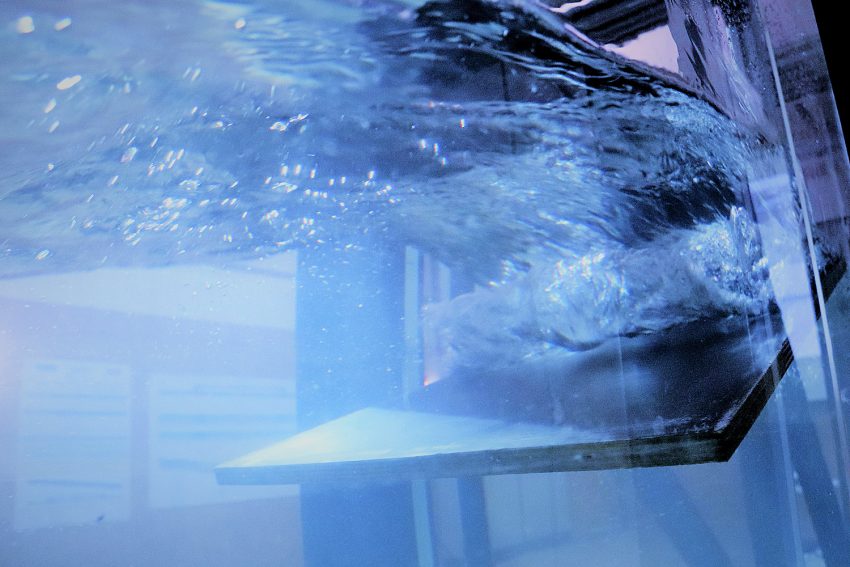Picture of the Month: Measuring the Wave From the Forschungszentrum Küste
It is the little brother of the Large Wave Flume in its future expansion stage and yet it is quite large itself: the miniGWK+ of the Forschungszentrum Küste (FZK) of Technische Universität Braunschweig and Leibniz Universität Hannover, which we take a look at in our picture of the month, is about 30 metres long.

View into the model wave channel miniGWK+ of the Forschungszentrum Küste. Picture credits: Heiko Jacobs/TU Braunschweig
In our picture of the month, however, only a small part of the model wave channel that was opened last year in Hannover-Marienwerder is shown. Here, the machine generated wave meets an angled plane in the rear part of the channel, which helps to dampen the wave. This prevents the water from simply splashing out of the channel.
The 1:10 true scale model of the later GWK+ has a wave machine, a current system and a deep section. Here the scientists can systematically investigate how waves and currents influence each other. Both natural sea states and tidal currents in the North Sea can be mapped. This offers great potential for studies on offshore wind energy.
Tsunami waves on a small scale
Thus, the miniGWK+ will carry out initial studies on the ecosystem strengthening coastal protection of the research association “Gute Küste Niedersachsen” as well as on the effects of waves and storm surges on offshore wind industry facilities – all on a smaller scale, of course. Tsunami-like waves can also be generated in the model wave channel.
The miniGWK+ will help to optimize the expansion of the Great Wave Flume in its planning phase. The knowledge gained from the model wave channel is also important for the optimal generation and analysis of waves in the future GWK+ – a worldwide unique large-scale research device with which the FZK can meet the energy transition topics offshore wind energy, tidal current energy and wave energy.
